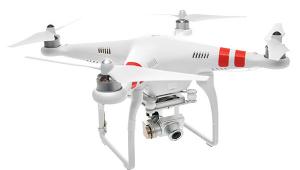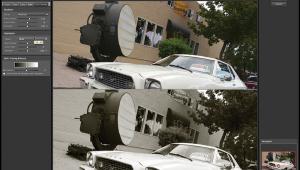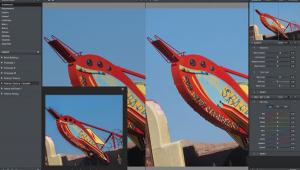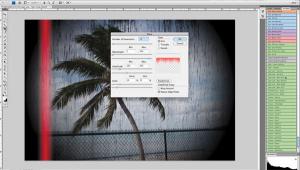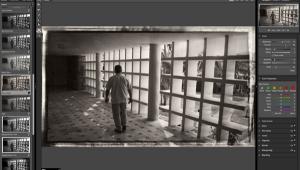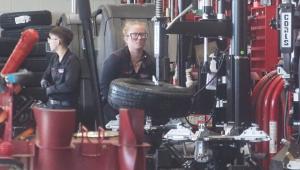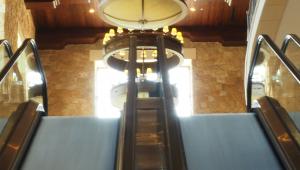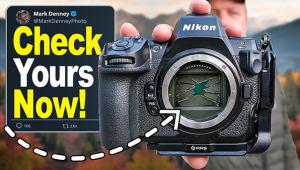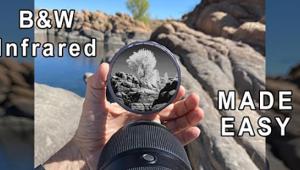Digital Innovations
Yes, But Is It Art? You Be The Judge
"Without contraries is no progression. Attraction and repulsion, reason and energy, love and hate, are necessary to human existence."--William Blake, 1790
 |
|
|
At the unveiling of a $40,000 mural at Livermore, California's new public library, people were surprised when the artist misspelled the names of Einstein, Shakespeare, Van Gogh, Michelangelo, and some other famous dudes. The artist's response was "...people who are into humanities and are into Blake's concept of enlightenment, they are not looking at the words." I'm the world's worst speller, just ask the editors, but as Samuel Clemens once told me: "Any man who can't think of more than one way to spell a word lacks imagination." Using Microsoft's Word Mac 2004, I've got more tools at hand than Mark Twain's Conklin fountain pen, but there's a lesson here for digital photographers, too. "Creativity" is never an excuse for sloppy and shoddy crafting of images. "I'll fix it later in Photoshop," is an unacceptable attitude. Always work to do your best by capturing the best possible image in the camera, be it film or digital.
 |
|
|
Free Plug-In Of The Month
In the world of Photoshop compatible plug-ins, virtualPhotographer (www.optikvervelabs.com)
is a double rarity--it is Windows-only and free. There are lots of free
plug-ins out there, but virtualPhotographer is so good you would actually pay
for it. (I would if they offered a Mac OS version.) The structure of virtualPhotographer
should be familiar to traditional film photographers. It can simulate the film
type as "Film" or "Slide," and adjust grain effect to
match film speed. It also lets you apply digital filtration, as well as lots
of cool darkroom effects and tints that can be applied via presets. The best
way to use virtualPhotographer is to apply some of the presets to your image
to see which ones look best. Then, fine-tune the other controls to get the exact
results you want. To see the original image, click and hold the left mouse button
down on the image in the Preview Window.
 |
|
|
Fast Cards, Faster Workflow
Lexar's (www.lexar.com)
ActiveMemory enabled Professional CompactFlash cards store user preferences
and device settings in a protected area on the card. These settings are preserved
even when the card is formatted or other data files on the card are deleted,
because the ActiveMemory data is stored outside the standard DOS and can only
be modified by the application that created them and will automatically configure
multiple ActiveMemory enabled products within a system (yup, that DOS, like
the Terminator, it's hard to kill) file structure on the card. ActiveMemory
is a system that includes Professional CompactFlash cards, Lexar's new
Professional FireWire and USB 2.0 card readers, and Camera Bits' (www.camerabits.com)
Photo Mechanic 4.5 image browsing software. When an ActiveMemory-enabled card
is inserted into the Lexar Professional CompactFlash reader, Photo Mechanic
automatically launches and begins to download the images on the card. During
the download process the IPTC (International Press Telecommunications Council)
information is automatically appended to each image.
 |
|
|
- Log in or register to post comments
